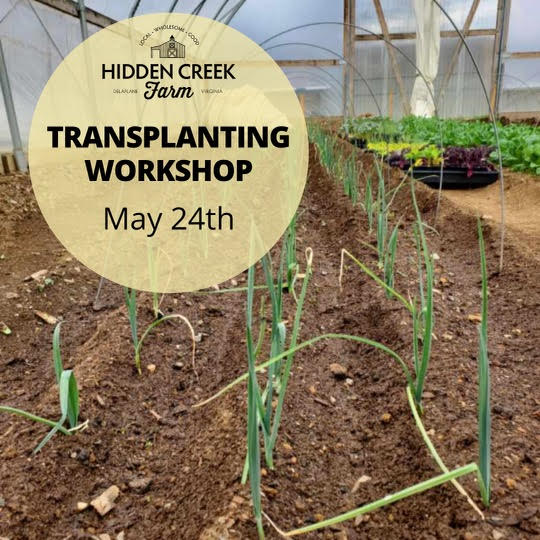Transplanting and Root Crops:
The two main ways to start crops in your garden are direct seeding and transplanting. Most root crops (except onions) work best when direct seeded. Most other crops can be direct seeded or transplanted. For transplanting, seedlings can be started from seed in trays or purchased from garden retailers ready to plant.
Preparing to Transplant:
- Harden off the plants by placing them outside a few days before you want to transplant.
- This will get the seedlings used to cooler/warmer weather and wind, making them better able to handle the stress of transplanting.
- Prepare your soil
- Create a weed free area
- Loosen and aerate the soil by hoeing or tilling
- Creates pathways for oxygen and water and makes it easier for roots to push through the soil
Transplanting:
- Determine your spacing.
- Recommended spacing is listed on seeding packets.
- The space between plants affects air flow (important for moisture and disease control), plant size, and number of plants.
- Dig holes for the transplants
- Deep enough to cover the transplant with soil level with (or just above) the transplant’s soil
- Carefully remove the seedling from its container by pushing up or pinching from the bottom
- Keeping the transplants damp, but not wet, will help with easier removal from the trays
- Avoid disturbing the roots as much as possible
- Add nutrients through compost or fertilizer for heavy feeders
- Crops that are in the ground for a long time (broccoli, cauliflower) or have many rounds of harvest (tomatoes, peppers) will benefit from extra nutrients.
- Nutrients added at the time of planting will be fully accessible to plants for weeks to months
- Surround the seedling with displaced soil level with the surface.
- Tomatoes are an exception and can be covered an inch or two up their stem.
- Water seedlings thoroughly.
Direct Seeding Root Crops
Preparing to Seed
- Prepare your soil
- Root crops prefer well-drained, loose soils
- Most soil in Virginia meets these requirements.
- Root crops grow best in raised beds
- Create raised beds through terraforming, hoeing up mounds, or adding soil to the existing area
- Root crops prefer well-drained, loose soils
- Create furrows for planting by dragging the corner of a hoe through the soil in rows
- Seeding depth can be found on seeding packets. Most root vegetables need to be planted 2-3 inches deep.
- Spacing between rows can also be found on the seeding packets. Most roots require 4-6 inches between rows.
Note on fertilization: Root crops benefit most from phosphorus. Too much nitrogen promotes foliage growth and “hairy”, thin tubers. Nitrogen fixing bacteria called rhizobia, live on the thin root off-shoots of the tubers. Crops will grow these “hairy” roots to meet the nitrogen fixing needs of the surrounding soils. Consider testing your soils through VA Tech soil testing lab to determine the nutrient needs of your soils.
Seeding
- Sprinkle seeds into furrows.
- Seeding density can be found on seeding packets and may be listed as “seed spacing”.
- Seeds should be visible in a single, continuous line with no overlap. When in doubt, ere on over-seeding and thin seedlings later.
- Cover seeds with soil pushed aside by furrows
- Water thoroughly.
Caring for Root Crops
- Start thinning root crops when the seedlings are all germinated and easily visible. About 3-4 weeks after planting.
- Thin seedlings according to “seed spacing” listed on the packet.
- Spacing is important to ensure roots grow to their full size.
- Maintain a weed free area.
- Weeds are direct competitors with root crops. They impact root shape in addition to germination and size.
- Water the right amount
- The soil has the right moisture content when you can press a handful of soil into a firm ball and your finger marks make an imprint, but no moisture escapes. When dropped, the ball should break into medium sized fragments.
- Root crop depth averages up to 6 inches and is important to get water to all parts of the roots.
- Overwatering can quickly lead to rotted roots.

